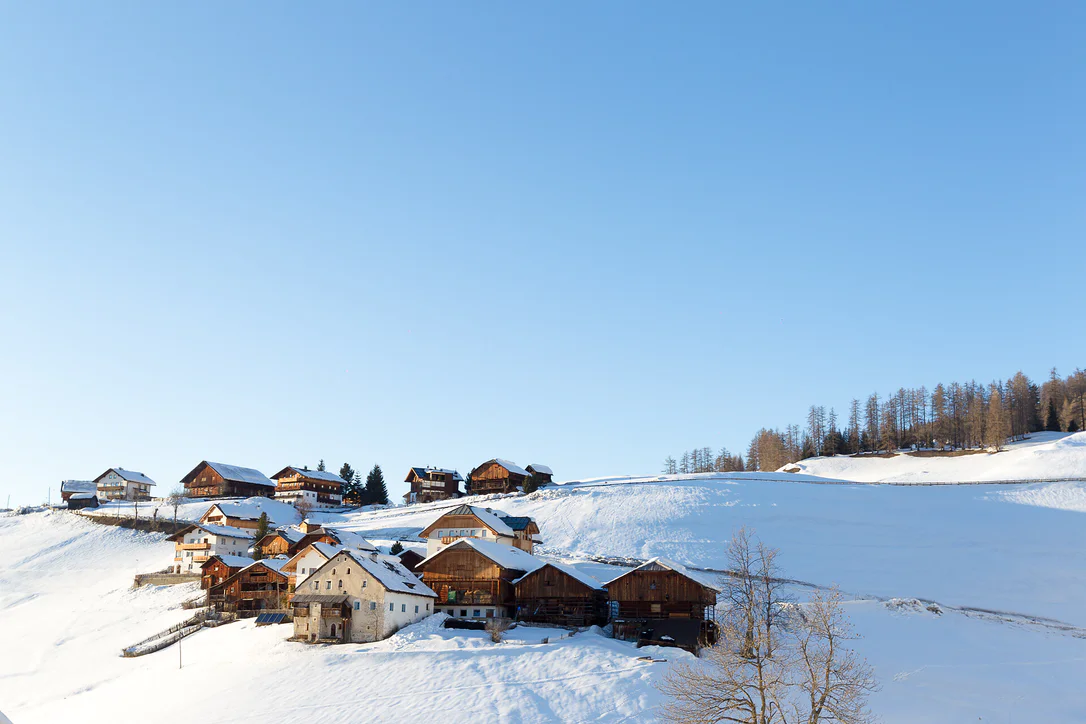The destination of the hike, the white Rit meadows, within the Fanes-Senes-Braies Nature Park, a UNESCO World Heritage site, are an expression of intact nature, peace and tranquillity, where you can enjoy the silence of nature.
After a two-hour walk, you will reach the Crusc da Rit cross, where a breathtaking panorama will open up before you, stretching from the Sas dla Crusc massif to the Pütia mountain. From this point you will be able to distinguish the three churches of La Val.






















































































